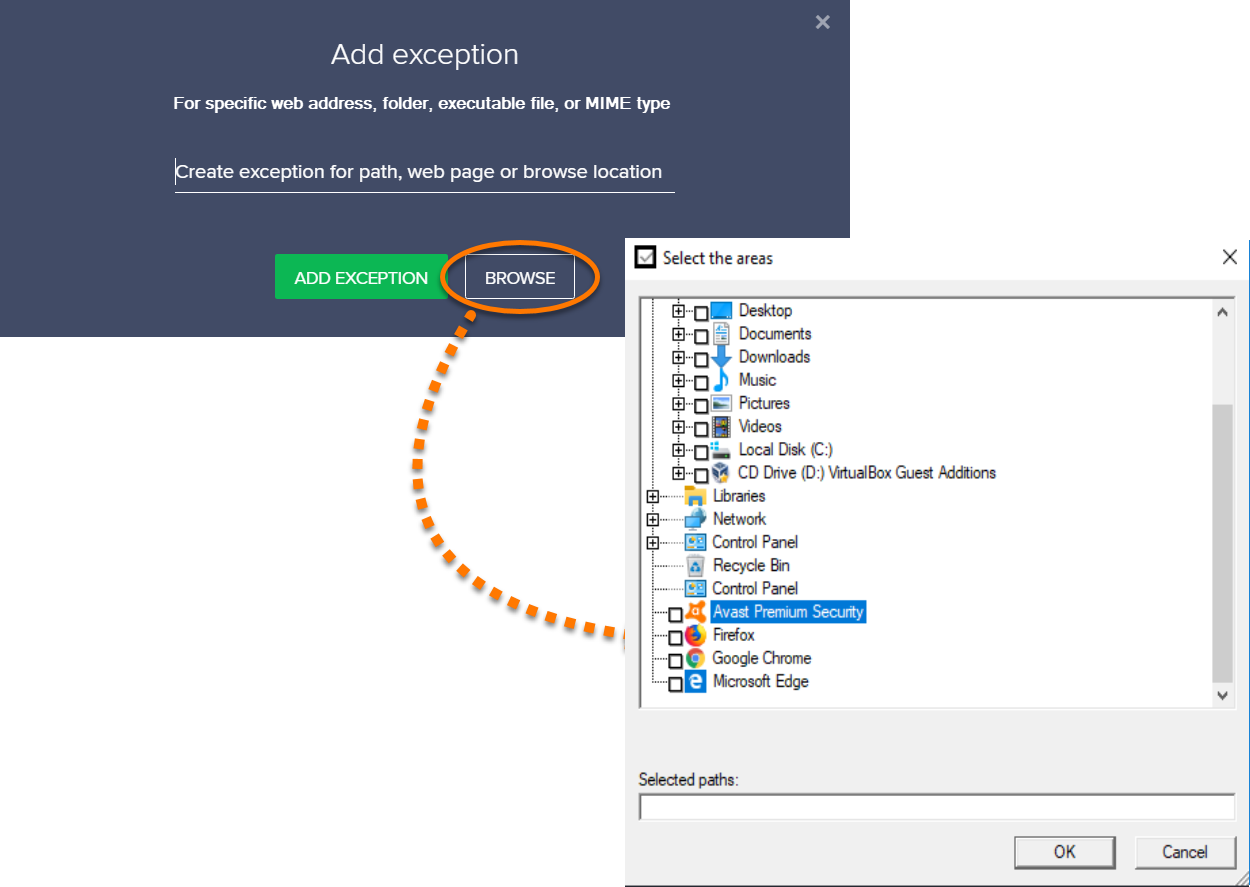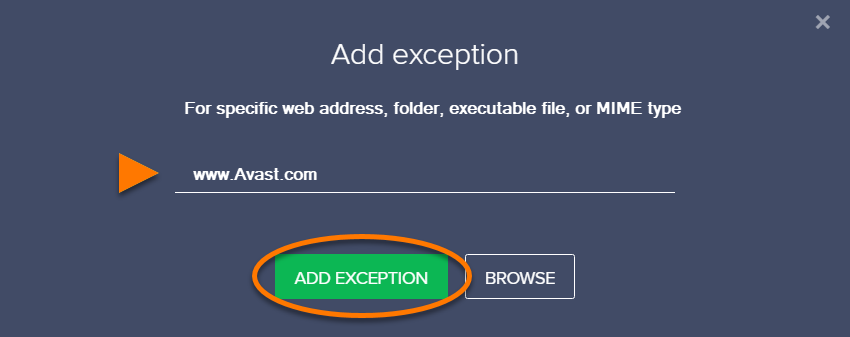How To Add Dev C++ To Exceptions List Avast
- C++ Basics
- C++ Object Oriented
- Jun 11, 2010 DevC avast virus!!! Whats with this simple makes a virus?? OMG im a malware progammer!! How can i learn C if i cant see the output and it makes i virus spaggy. As quite a few people will tell you system is evil, don't use it. Well, it's not evil but can present a security compromise.
- Avast creates default firewall rules the first time an application or process is started. You can manage rules for when any particular application connects with the Internet or with another network.
- C++ Advanced
Sometimes it's not possible to uninstall Avast the standard way - using the ADD/REMOVE PROGRAMS in control panel. In this case, you can use our uninstallation utility avastclear. Download avastclear.exe avastclear.exe on your desktop; Start Windows in Safe Mode; Open (execute) the uninstall utility. Alright figured it out go to your avast settings and there is an area where you can add exceptions settingsantivirus then you scroll down that menu and there is an area titled EXCLUSIONS where you can browse to your visual studio path ie. C:johndocumentsvisualStudio2010projects::: select your project path and it will add it to a list of scanning exceptions and you should be able to test run your files.
- C++ Useful Resources

- Selected Reading
An exception is a problem that arises during the execution of a program. A C++ exception is a response to an exceptional circumstance that arises while a program is running, such as an attempt to divide by zero.
Exceptions provide a way to transfer control from one part of a program to another. C++ exception handling is built upon three keywords: try, catch, and throw.

throw − A program throws an exception when a problem shows up. This is done using a throw keyword.
catch − A program catches an exception with an exception handler at the place in a program where you want to handle the problem. The catch keyword indicates the catching of an exception.
try − A try block identifies a block of code for which particular exceptions will be activated. It's followed by one or more catch blocks.
Assuming a block will raise an exception, a method catches an exception using a combination of the try and catch keywords. A try/catch block is placed around the code that might generate an exception. Code within a try/catch block is referred to as protected code, and the syntax for using try/catch as follows −
You can list down multiple catch statements to catch different type of exceptions in case your try block raises more than one exception in different situations.
Throwing Exceptions
Exceptions can be thrown anywhere within a code block using throw statement. The operand of the throw statement determines a type for the exception and can be any expression and the type of the result of the expression determines the type of exception thrown.
Following is an example of throwing an exception when dividing by zero condition occurs −
Catching Exceptions
The catch block following the try block catches any exception. You can specify what type of exception you want to catch and this is determined by the exception declaration that appears in parentheses following the keyword catch.
Above code will catch an exception of ExceptionName type. If you want to specify that a catch block should handle any type of exception that is thrown in a try block, you must put an ellipsis, .., between the parentheses enclosing the exception declaration as follows −
The following is an example, which throws a division by zero exception and we catch it in catch block.
Because we are raising an exception of type const char*, so while catching this exception, we have to use const char* in catch block. If we compile and run above code, this would produce the following result −
C++ Standard Exceptions
C++ provides a list of standard exceptions defined in <exception> which we can use in our programs. These are arranged in a parent-child class hierarchy shown below −
Here is the small description of each exception mentioned in the above hierarchy −
| Sr.No | Exception & Description |
|---|---|
| 1 | std::exception An exception and parent class of all the standard C++ exceptions. |
| 2 | std::bad_alloc This can be thrown by new. |
| 3 | std::bad_cast This can be thrown by dynamic_cast. |
| 4 | std::bad_exception This is useful device to handle unexpected exceptions in a C++ program. |
| 5 | std::bad_typeid This can be thrown by typeid. |
| 6 | std::logic_error An exception that theoretically can be detected by reading the code. |
| 7 | std::domain_error This is an exception thrown when a mathematically invalid domain is used. |
| 8 | std::invalid_argument This is thrown due to invalid arguments. |
| 9 | std::length_error This is thrown when a too big std::string is created. |
| 10 | std::out_of_range This can be thrown by the 'at' method, for example a std::vector and std::bitset<>::operator[](). |
| 11 | std::runtime_errorCook serve delicious v3.20 download. An exception that theoretically cannot be detected by reading the code. |
| 12 | std::overflow_error This is thrown if a mathematical overflow occurs. Jan 13, 2015 50+ videos Play all Mix - Beyonce singing halo without auto tune! YouTube How to Sing without Autotune - Michael Jackson Recording Outtake - Duration: 10:13. Does beyonce use autotune when singing live. Feb 27, 2013 There is much speculation online about who does — or doesn’t — use Auto-Tune. Taylor Swift is a key target, as her terribly off-key duet with Stevie Nicks at the 2010 Grammys suggests she. Does beyonce use auto tune? Wiki User October 08, 2012 3:07AM. Probably yes. All singer use auto tune. Im not sure how much though. Some use little some use lots but in all non live songs, they. Feb 04, 2010 Its not auto-tune that is apparent and in your face, but its suttle, to the point where you cant tell if its her real voice or if its been edited. You'd be surprised as too how many people use auto tune, even professional singers. Sometimes its not about being natural. Its about getting it. |
| 13 | std::range_error This is occurred when you try to store a value which is out of range. |
| 14 | std::underflow_error This is thrown if a mathematical underflow occurs. |
Dev C++ 5.11
Define New Exceptions
You can define your own exceptions by inheriting and overriding exception class functionality. Following is the example, which shows how you can use std::exception class to implement your own exception in standard way −
How To Add Dev C++ To Exceptions List Avast 2016
This would produce the following result −
Dev C++ For Windows 10
Here, what() is a public method provided by exception class and it has been overridden by all the child exception classes. This returns the cause of an exception.